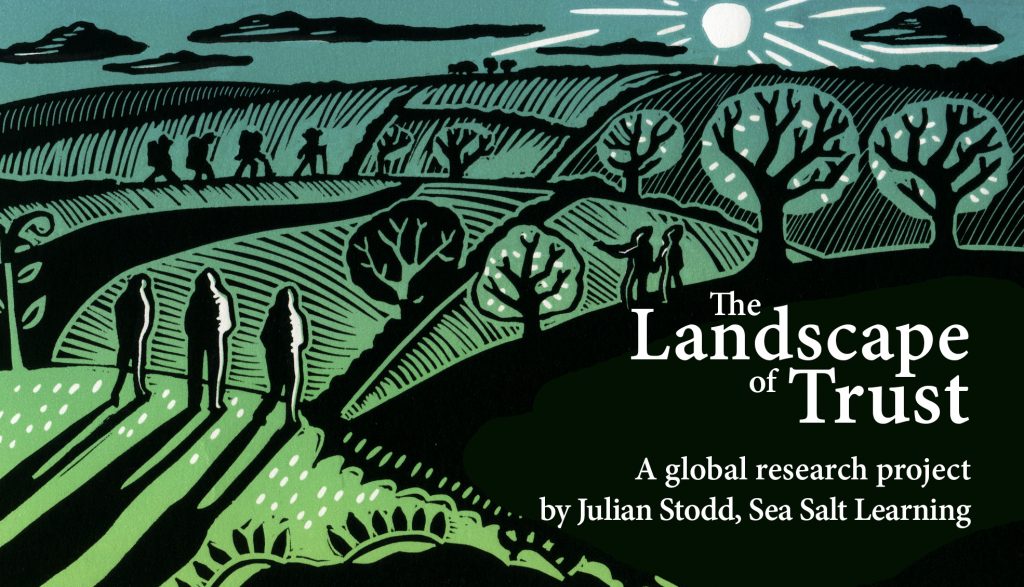The Landscape of Trust will explore how trusts sits within systems: the type of trust held between two individuals, the type of trust held within communities, the trust we hold in technology, and the type of trust held at an organisational level. It’s called the Landscape of Trust because the intention is to produce a map: a diagnostic tool to illustrate what trust means that each of us, and to each part of the system, to hold meaningful conversations, and make meaningful interventions, to build trust.
In other words, we will explore what trust means, and what we do about it. Our intention is that this will be one of the largest such research projects available: global and diversified in terms of sector and culture, allowing us to baseline against different industries and communities.
In phase I, we will gather a thousand narratives around trust to build out the landscape. These will fall at the highest level, exploring ‘what trust means to me’, and working down into subcategories, stories of how trust is earned, how it fractures, where it is held, and how it favours. Last year we gathered an initial 120 narrative accounts, and this work will build off that early sketch. The research approach will be a combination of large-scale open collection and targeted closed groups to fill in the gaps, so some open research through Twitter and LinkedIn, and some closed groups within specific organisations and sectors.
In phase II, we will build a prototype diagnostic: whilst in the first phase analysis will be manual, in the second phase will be looking for automation, and also visual approaches to representing the landscape, and app-based approaches to the diagnostic. Prototype this at scale, intending for at least 1000 open users, and within 10 organisations with at least a hundred participants in each. We will also explore cultural effects at this stage.
Phase III will be about interventions: having prototyped a diagnostic that we can make increasingly robust, we’re particularly interested in how this can be used in a one-to-one context, within groups and teams, and at an organisational level. At this stage, we will also start to look at multiple language options and explore variance in those.
The prototype work in 2016 was a fascinating insight into the potential of this space: it impacts on every aspect of the Social Age and how we build the Socially Dynamic organisation. For social learning we need high trust communities, in Social Leadership we draw upon those communities and use our social capital to develop trust within them, for co-created change, and to build the Socially Dynamic organisation, we need trust, so trust forms one of the golden threads that runs through every aspect of the Social Age.
The Landscape of Trust research project will run from 2017 and we intend to #WorkOutLoud throughout the whole process.
